Hold The Line!: Famous Last Stands of World War Two
Brest:
August - September 1944
Ending The Brittany Campaign
by Sean Goodison
By August, 1944, Operation Cobra had proved successful. German forces in Brittany began to retreat, ahead of the American 4th and 6th Armored Divisions, to the vital port city of Brest. When the Americans made their move on the city on 7 August however they were met with a well organized defence.
2. Fallschirmjägerdivision formed the core of the defending force which also included the 266. Infanteriedivision, 343. Infanteriedivision and other elements, most of which were anti-aircraft batteries. The German infantry had improved upon the city’s original French defence network creating a formidable strongpoint. Furthermore, the German coastal batteries had been modified to fire inland and were well supplied with ammunition.
|
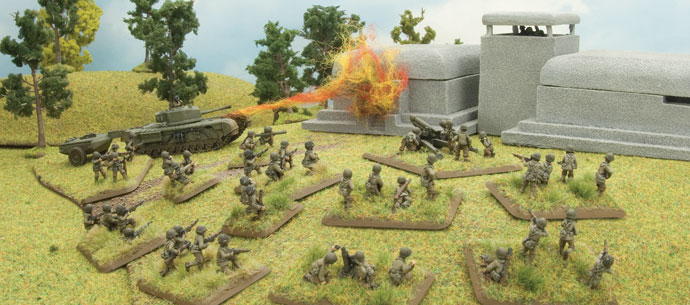 |
On 1 September 1944 the US infantry surrounding the city began to tighten it’s grip. One by one the positions around Brest began to fall. In the East, Hill 105 was taken in one day by the 2nd Infantry Division and after taking a full week to replenish their artillery stores they repeated the feat, taking Hill 90. To the west, 29th Infantry Division overran Hill 103 with flame-throwers before moving on to take Fort Keranroux.
The final position blocking the way to the old city wall was Fort Montbarey. On 14 September the Allies assaulted with a squadron of 15 British Churchill Crocodile flame tanks. Despite their lack of anti-tank weapons the Fallschirmjäger troops continued to hold the fort until Allied engineers blew out its northern face with 2000 pounds (910 kg) of TNT.
|
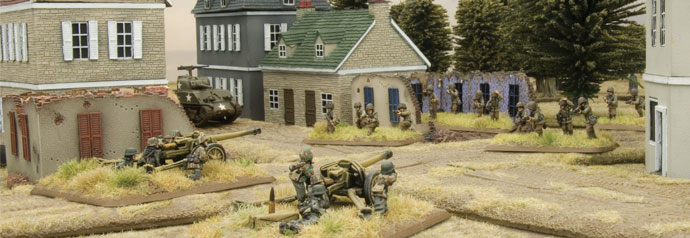 |
18 September found the Germans surrendering en masse and 20,000 soldiers were taken prisoner. The city’s
port was rendered useless by the Germans and wouldn’t be repaired in time to aid the Allied war effort. Brest had been captured, but not intact, and in that regard the operation had failed.
~ Sean.
|
Budapest:
December 1944 - February 1945
100 Grueling Days
by Victor Pesch
After withdrawing from Debrecen and across the Tisza River, Hungarian and German troops made their final defence of Budapest starting 24 December 1944. Encircled by 18th Tank Corps of the Third Ukrainian Front and the vanguards of the 6th Guards Tank Army of the Second Ukrainian Front, the Axis forces defended the city from either side of the Daunbe River, which parted the city. 33,000 German and 37,000 Hungarian troops were trapped in the city.
The Soviets made numerous thrusts into the city. They attempted to penetrate through sectors held by the
Hungarians, but Hungarian armour, German Feldherrnhalle, and SS troop counterattacks threw back most of their attacks.
|
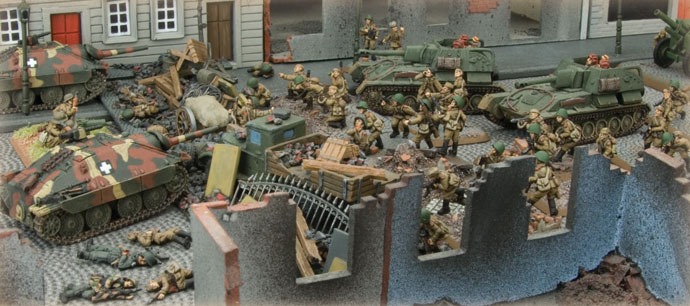 |
By 10 December, the Soviets had tightened their strangle on the city and began to pound it with heavy artillery. This continued through to Christmas Day, when the Soviets tried to batter their way into the city, and broke through the eastern bridgehead on 28 December. These attacks continued through December, forcing the Hungarian 10th Infantry Division to retreat to a shorter defensive line.
From the night of 31 December through to 15 January, the Soviets made a concerted attempt to throw the Axis forces out of Pest with a front-wide assault, forcing the defenders to commit their last reserves in an attempt to hold the eastern part of the Hungarian capital. The soviets were thrown back each time, but the defenders were forced to shorten their defensive lines with each attack on them. Finally on 16 January, forces in Pest were allowed to withdraw across the Danube to Buda. Many Hungarian troops and civilians were trapped in Pest when the last bridge was blown on 18 January.
|
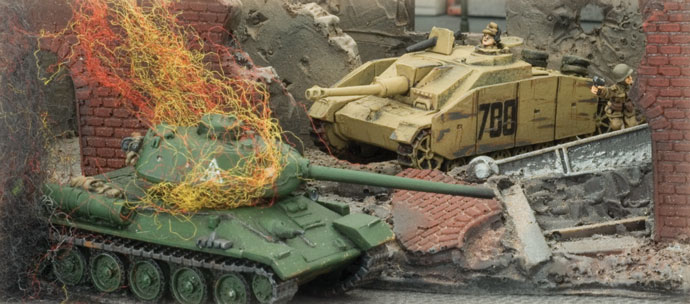 |
Brutal street fighting continued in Buda as the Soviets pushed from the west. On 11 February 16,000 Germans and Hungarians prepared to breakout with what they could carry, following orders from German command. The majority were either killed or taken prisoner though various groups of Hungarians and Germans made it out in small numbers. The remaining defenders surrendered to the Soviets on 13 February 1945. After 100 days of battle, Budapest had fallen.
~ Victor. |
Transylvania:
August - September 1944
Hungarian 24th Border Guard
by Wayne Turner
The Hungarian-Romanian border divided Transylvania in 1944 between the north, under the control of the Hungarians, and the south, under the Romanians. The peculiarity of this border resulted in a wedge of Hungarian territory dipping along the Carpathian Mountains to be surrounded by Romanian territory. This area was known as the Székely Corner. The Székely were the ethnic Hungarian people of Transylvania, and many of their number served with the Hungarian Border Guard forces.
In August 1944 the Romanians were defeated by the Soviets and were forced to change sides and take up arms against the Germans and Hungarians. This allowed the Soviets to immediately pursue the Germans to the Hungarian border and to begin forcing the passes through the Carpathian Mountains into Transylvania. All that stood in their way were the Hungarian troops of the 67th and 68th Székely Border Guard Groups and a few scattered units of retreating Germans. The first attacks on the passes began on 23 August and fighting along the frontier continued until 5 September when the Germans and Hungarians established new defensive lines along the Maros (Mures) River further west.
|
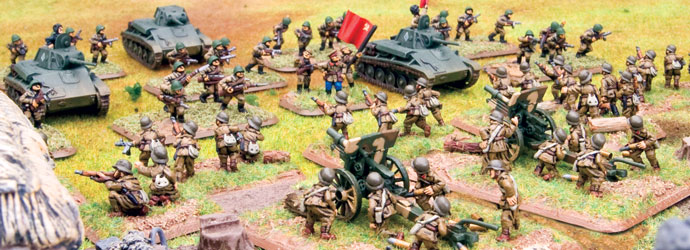 |
One of the units heavily involved in the fighting was the 24th Border Guard Battalion stationed around
Kézdivásárhely
(Târgu Secuiesc). The battalion was mobilised in early 1944 as the
fighting began to close on the Hungarian border. The battalion had 1650
men under arms who were divided between three field companies, two
fortress companies, a machine-gun company, a pioneer company and various
battalion anti-tank and weapons platoons.
Their first engagement
was on 25 August as the Soviets began to probe the Ojtózi River Gorge
held by the 1st Fortress Company. However, no serious assault was
launched and German troops arrived on 27 August to reinforce the pass.
Soviet riflemen of the 23rd Tank Corps finally assaulted the pass
defences on the same day. A large Hungarian patrol was caught by
surprise and almost wiped out to a man. The following day the borders
guards were joined by German Gebirgsjäger troops and the 8th and 10th
Székely Border Guard Battalions (militia raised in times of war) and a
series of counterattacks were launched. The Soviets were held about
two-thirds of the way through the gorge at the village of Sósmező.
Hungarian troops positioned in the high ground around the village kept
the Soviets pinned down with rifle, machine-gun, mortar and antitank
gunfire. The Border Guards’ local knowledge of the terrain gave them the
upper hand and brought them the time to bring in additional troops and
weapons to reinforce the defence.
|
 |
On 31 August the Soviet finally deployed tanks against the stubborn
Border Guards, and when the German were unable to bring up their tanks
to counter, the Hungarians were forced to withdraw. The Hungarian 20mm
anti-tank rifles and 37mm anti-tank guns had little effect on the Red
Army T-34 tanks. On 1 September the Hungarian withdrew to Szalutárisz
before beginning their retreat to the Maros (Mures) River. For the
fighting at Ojtózi Gorge the commander of 1st Fortress Company, Hadnagy
(Lieutenant) Sándor Megyeri, his deputy Hadnagy (Lieutenant) Ferenc
Kovács, and platoon commander reserve Zászlós (Ensign) János Vácz all
received the Hungarian Order of Merit Cross with War Decoration.
~ Wayne. |
|
|